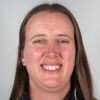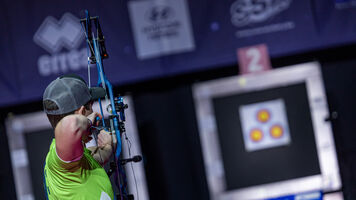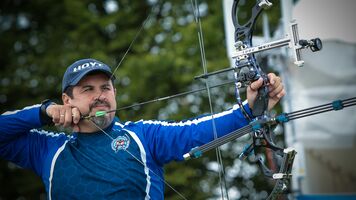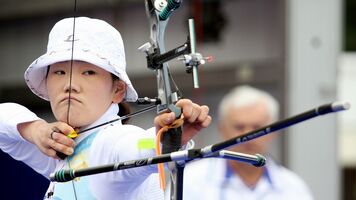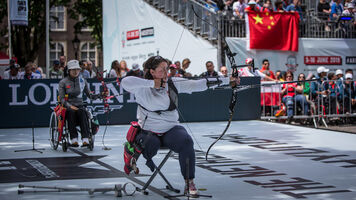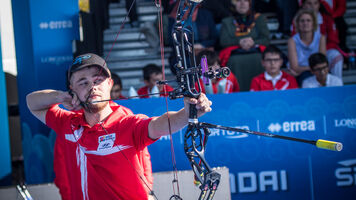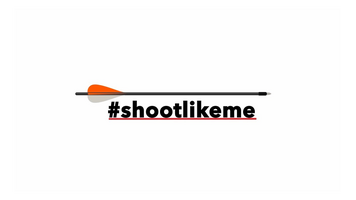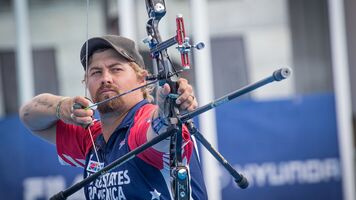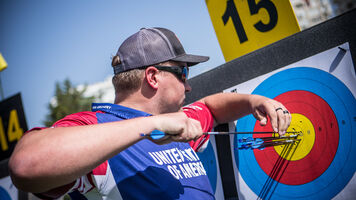Nicky Hunt: Investigating the technique of D’Almeida 2.0

As a young archer, Marcus D’Almeida had a good deal of success.
He picked up two major silver medals when he was 16 – at the Youth Olympic Games in Nanjing and the Archery World Cup Final in Lausanne, both in 2014.
The final of the Youth Olympics was incredible.
Marcus dropped just four points in a five-set match (29, 29, 30, 29, 29) only to lose to Korean archer Lee Woo Seok, 7-3. As under-18s, the pair shot 60 metres rather than 70 but it was remarkable nonetheless.
And a few months later, he fell short only to Brady Ellison as he podiumed at the season-ending event on the senior circuit.
In 2015, D’Almeida was then crowned World Archery Champion for the under-18 age group.
The pressure of a home Olympics quickly mounted and, around a disappointing performance at Rio 2016, the results stopped coming. Marcus has still been seen internationally but his young promise seemed spent.
It was at the end of 2021 that the Brazilian archer returned to the podium, taking yet another major silver medal as he finished runner-up to Kim Woojin at the Hyundai World Archery Championships.
That return to form has carried into 2022.
The 24-year-old won the Hyundai Archery World Cup stage in Paris, took a mixed team bronze in Medellin – partnering with Ana Caetano to upset the Olympic Champion Koreans – and has generally looked like the medal contender he was touted to be all those years ago.
So what’s enabled Marcus to return to the podium?
Aside from the countless possible mental, situational or training reasons, I’m interested to see if there’s anything technical that’s changed.
If we compare competition images of D’Almeida from 2014 and 2022, the most notable difference is his head rotation. It’s less face-on to the target – slightly tilted down – and it looks like it’s a result of better overall alignment.
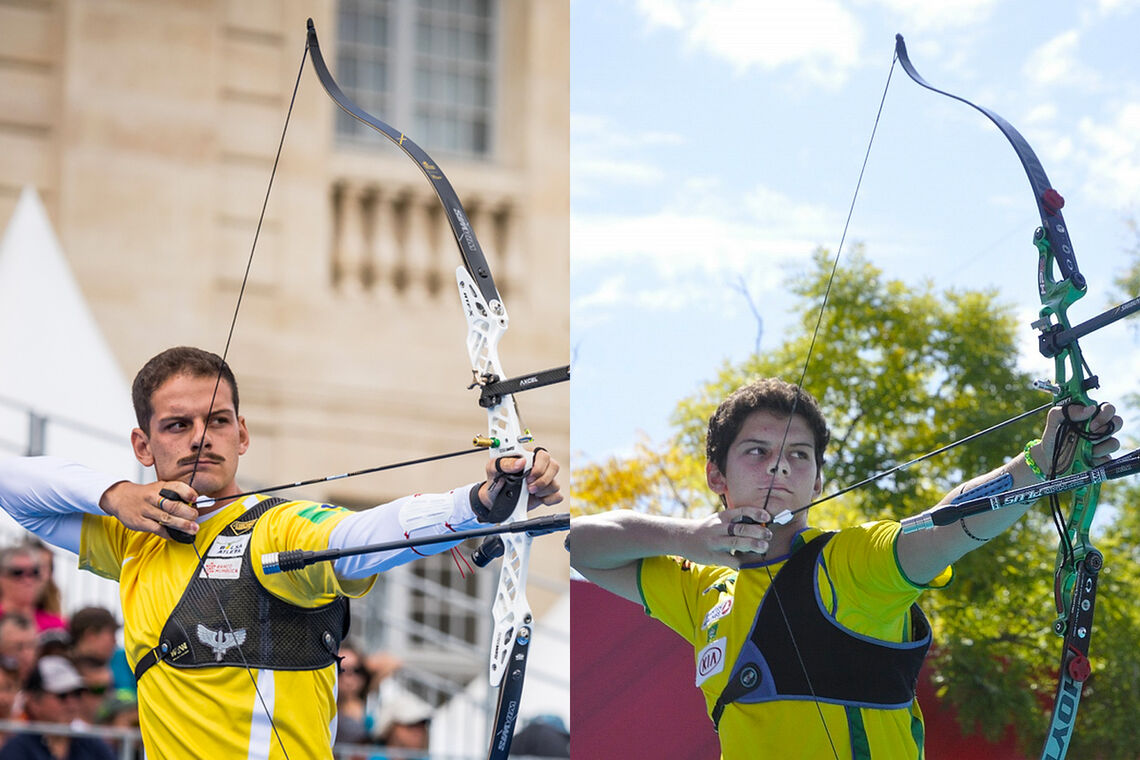
The string now meets Mark on the centre of his nose, which is the most sensitive part, and his anchor looks firmer, and the front of his chin, with more contact between his hand and face along the side of his chin.
It’s so important that the back half of a recurve archer’s draw – the string hand, string and back elbow – reach a solid stop point, which is easily repeatable and reliable under pressure. This whole full draw unit forms the back half of a recurve archer’s sighting process. If it’s not stable, it’s not working.
(Think of it like a peep sight on a compound bow.)
We see this kind of front-face anchor prevalent in Korean technique, particularly among the women, who often pull so hard into the chin that it leaves a mark on release.
Keeping that anchor on the front of the face, rather than floating on the side of the jaw, gives that solid stop – and ensures that the string moves forward, away from any possible interference to arrow flight, on release.
This change in head position may also have improved Marcus’ string picture, which is what he sees at full draw. That string is now fully focused in front of his aiming eye.
Marcus’ front hand position and front arm look almost identical in 2022 as they were in 2014. But it does look as though his front elbow is rotated a little more and his front shoulder is pushed slightly more inwards, behind the bow.
This has also resulted in his back elbow also moving slightly more into alignment and a flatter overall technique profile.
This small change on the front end should have put more skeletal support into his shot.
The forces that travel through the front arm will transfer through the top forearm bone, called the radius, into the base of the thumb into the grip. Without proper elbow rotation and alignment, the forces travel through the bottom forearm bone, called the ulna, and put the power into the grip through the lifeline on the hand.
On the back end, Marcus’ release has remained much the same over eight years. His follow-through ends up in a near-identical spot and his front hand looks relaxed.
The moustache is certainly new, too – but not sure that helps anything with his technique!
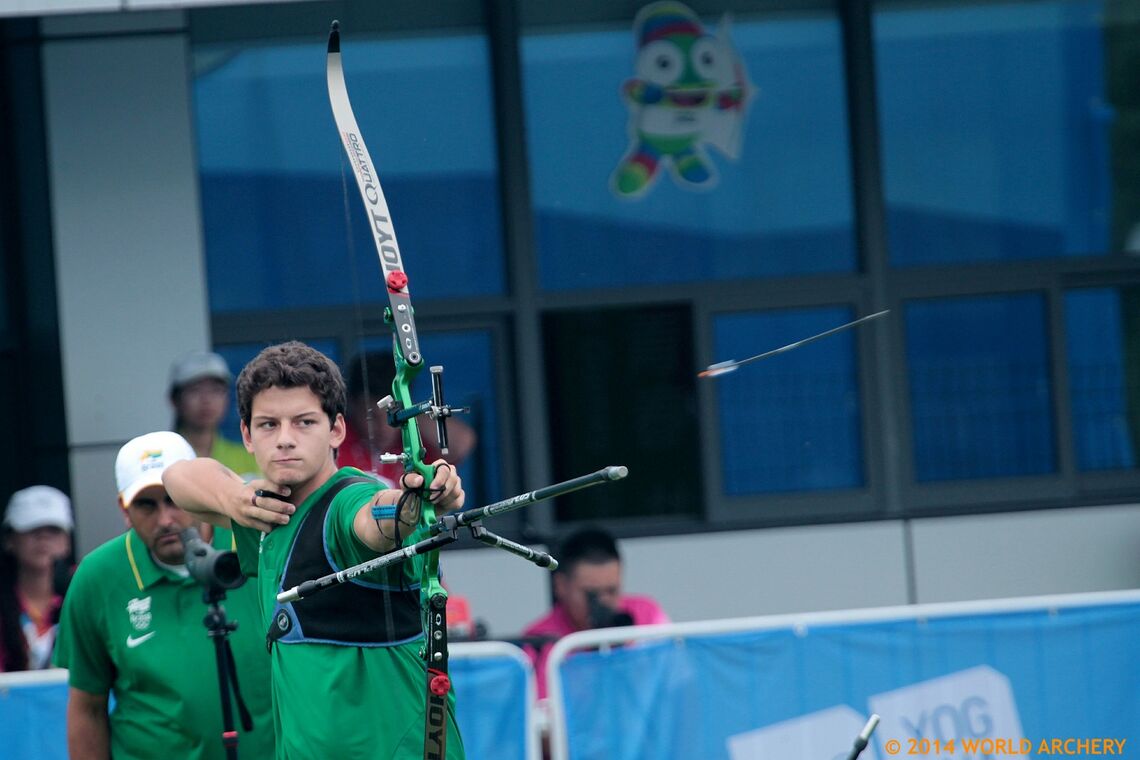
As a member of the Brazilian national squad for a decade, Marcus has lived through a number of coaches.
British Olympian Richard Priestman was there from 2013 to early 2014, while Marcus was at school and shooting 300-400 arrows in the evenings. The draw weight on his bow was set at around 44 pounds, even back then.
Evandro De Azevedo coached Marcus through his medal-winning seasons in 2014 and 2015 – and there’s not been all that much stability since.
At the beginning of 2022, Alberto Zagami left Great Britain and took up the head coach role in Brazil. He said that his focus has been on introducing training structures and clear goals and investing time in strategy and analysis.
Alberto is known for his expertise in strength and conditioning. He’s likely built Marcus’ draw weight up to the mid-50 pounds on his fingers, giving a much faster arrow speed that will be much less affected by the wind.
These are details, though. Good fundamentals are essential. They are what made Marcus successful back in 2014 and what are maintaining his success in 2022 and beyond.
Marcus won a spot for the Hyundai Archery World Cup Final with his stage win in Paris. What a great opportunity to see whether he can, firstly, upgrade from that silver medal from eight years ago – and secondly continue to grow as an archer and athlete in the spotlight.
